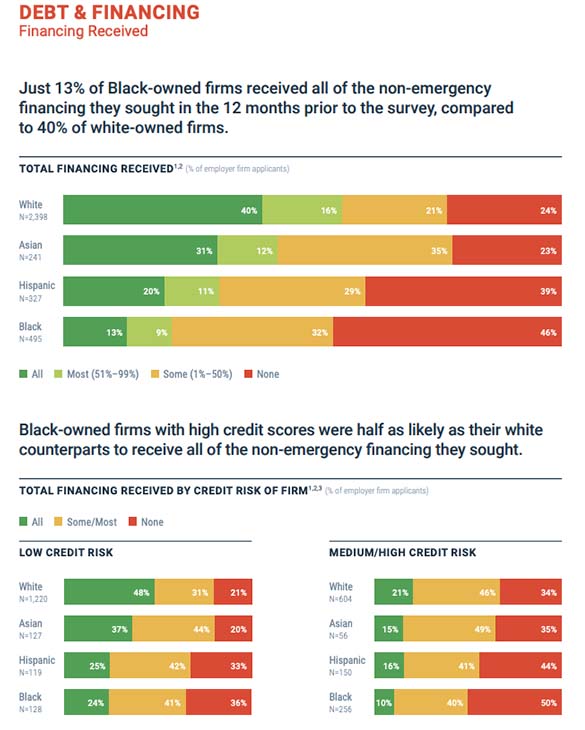
For decades, lenders and others have relied on core credit data focused on financial borrowing and repayment behavior. Many factors go into the decision-making process, including the length of credit history, the number of open accounts, and on-time bill payments. What happens when a consumer or small business owner relies on cash for financial transactions or has never held a mortgage or a business loan?
A significant portion of the U.S. adult population faces this problem. According to a 2020 report by the Federal Reserve, as many as 21 percent of U.S. consumers survive without a credit card. As a result, the traditional credit-scoring model doesn’t tell the full story of their financial health, and they could be labeled “credit invisible” or “unscored” due to limited access to credit.
It’s both a personal and business problem. For consumers, that might mean not being able to secure a mortgage, insurance, or even be considered for a job. Start-ups and small businesses, meanwhile, may not be able to access credit to fuel their future growth and success.
The recent explosion of new business filings brings the challenge of credit access to a head. Because small and emerging businesses can lack sufficient credit histories to qualify for credit on their own, they may rely on the owner’s personal credit profile for lending decisions. Yet, some small businesses continue to struggle to get financing. It’s especially pronounced in communities of color. For example, Black-owned businesses get turned down for bank financing at twice the rate that white-owned businesses do, according to the Federal Reserve.
 Source: Federal Reserve SBCS 2021 Report on Firms Owned by People of Color
Source: Federal Reserve SBCS 2021 Report on Firms Owned by People of Color
Technological innovations such as Experian’s DataShare ™, Experian Boost and Social Media Insight are shaking up the conventional scoring system by bringing in alternative credit factors to fill out the credit picture. For lenders, the emergence of alternative data, otherwise known as non-traditional data, helps them make informed business credit decisions among a wider number of customers and prospects.
What is non-traditional data?
Traditionally, lending and other credit decisions have been based on factors such as credit history and on-time payments. That can allow people and businesses that do not have a lot of cash but can demonstrate good repayment behavior to borrow. However, it’s quite another story when the situation is flipped. Some consumers and businesses don’t utilize financial products, though they might have healthy cash flow. As a result, they lack the necessary data to generate a credit score, making them appear to be unattractive credit risks.
Non-traditional data is an important way to give consumers access to better rates and open up borrowing to more consumers and businesses. This data can include things like rent and cell phone payments, giving lenders a broader range of information to consider. According to FinRegLab, 96 percent of U.S. households have a bank account or a prepaid card and 91 percent of U.S. adults have at least one utility account in their names.
Overall, including other credit data, in addition to core credit data, would bring more people into the credit system. Including non-traditional forms of data can create financial inclusion for consumers and businesses.
Where does non-traditional data come from?
Non-traditional data is generated by aggregators that scour utility accounts, public records and property information to understand the financial activities of consumers. It considers a wider range of financial behaviors than what just appears on a credit report. These can include:
– Rent payments
– Utility payments
– Employment verification
– Bank account information, including recurring payroll deposits, average account balances and withdrawal activity.
– Property records
Non-traditional credit data goes one step further and supplements this data with information on consumers’ use of alternative lending arrangements such as payday loans, small-dollar credit lenders, auto financiers, rent-to-own, retail financing, and others.
Commercial lenders can also take advantage of technological innovations to gather non-traditional data for lending decisions, which can drive more approvals and greater profits.
For businesses, non-traditional credit data can include:
– Social media: How many user check-ins and reviews is a business getting on social media? That can say a lot about its business. Experian Social Media Insight™ provides a social media view to help lenders better score business borrowers with thin credit profiles.
– Online financial activity: An uptick in PayPal or Venmo transactions can suggest healthy cash flow.
– Bank details: Borrowers can permit lenders to view their business banking account, which shows how much cash on hand they have.
– Accounting software: With direct access to QuickBooks or FreshBooks, lenders can make determinations about a potential customer’s financial health in real-time.
– Shipping information: For businesses moving products, analyzing shipping data allows lenders to make assumptions on cash flow.
How is non-traditional data currently used?
Financial institutions have become receptive to other credit data sources to provide additional insights. That can improve the accuracy of credit scoring and allow lenders to find more creditworthy consumers.
According to Experian’s 2020 State of Alternative Credit Data report, 96 percent of lenders believe that during times of economic stress, non-traditional credit data allows them to more closely evaluate consumers’ creditworthiness and reduce their credit risk exposure. By deeming more consumers creditworthy, financial institutions can increase financial inclusion, while uncovering new lending opportunities for themselves.
Modern tools make that possible. For example, Experian’s Clarity Services provides insights on more than 62 million U.S. consumers, helping lenders better assess and manage risk. Lenders can see consumers’ utilization of alternative finance and payment behaviors for a more holistic view of their creditworthiness.
Likewise, Experian’s DataShare™ is a non-traditional digital solution, which can be used to make commercial lending decisions. It provides owner-permissioned data to expedite new client onboarding and increase retention by bringing digital transformation to document gathering. With real-time financial data, lenders can understand the trends in their customers’ financial positions to better assess risk.
How can non-traditional data be used to calculate credit risk?
Non-traditional credit data can help lenders gain deeper insights into their borrowers to better assess risk. For starters, it allows them to spot creditworthiness trends in real-time, rather than a snapshot in time that traditional credit data typically provides. A deteriorating financial position among prime customers and signs of improvement among marginal customers can be spotted faster with a combination of traditional and non-traditional data.
Also, some consumers may appear to be “risky” through the lens of core credit data but may prove less so when non-traditional data points are included. For example, according to FinRegLab research, cash flow data can be predictive of credit risk, not just credit utilization and history.
Owner-permissioned data lets consumers decide what lenders can see when making their credit determinations. For instance, lenders who use only traditional data might see an account that has been turned over to collections. With owner-permissioned data, on the other hand, a lender can also see a record of paying rent and cell phone bills on time. As a result, lenders can evaluate both types of behaviors in their credit decision, providing them with a fuller picture.
Looking at how consumers leverage alternative financial products to manage debt can also reveal responsible credit-management behaviors. Consumers who appear to be low-risk in the eyes of traditional credit data may actually be riskier if they do not manage their alternative finance products well – an activity that doesn’t appear on most credit reports.
The challenges of non-traditional credit data
Non-traditional credit data has the potential to open the world of credit to underserved communities. For lenders, it can unlock opportunities by bringing in a wider range of potential customers. But it’s important to recognize that there are challenges too.
For starters, lenders are still figuring out how to incorporate it into their lending decisions. While non-traditional credit data has always been available, big data collection now makes it easier to access. As lenders and regulators become more comfortable with its use, they will begin to incorporate it into credit decisions, while also being aware of its limitations.
Consumers, meanwhile, may have data security and privacy concerns about how their information will be used and who may have access to it. The Consumer Financial Protection Bureau is working on guidelines that ensure that lenders are using data appropriately and fairly.
Taking the next step
Ready to see how non-traditional credit data can drive more business while also reaching your diversity, equity and inclusion goals? Modern tools simplify the process and bring a more holistic view to inform the lending decision.
Learn more about how you can expand your customer base and improve profitability with non-traditional credit data.
Learn more about Experian DataShare
Related Articles
